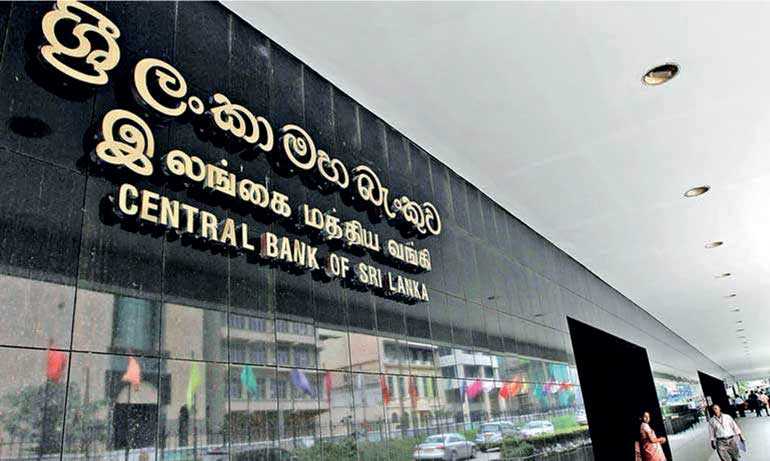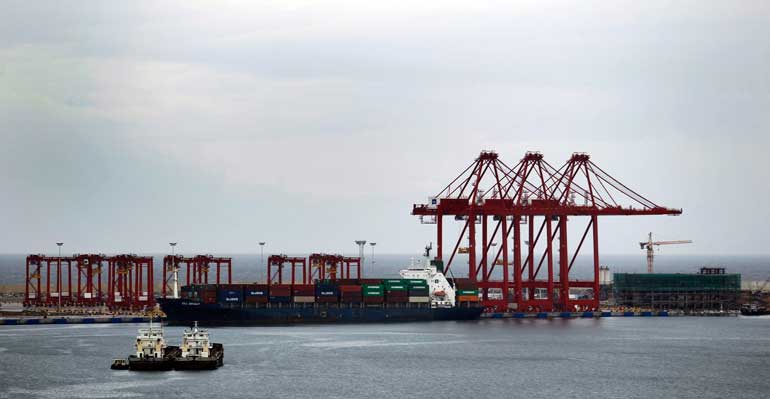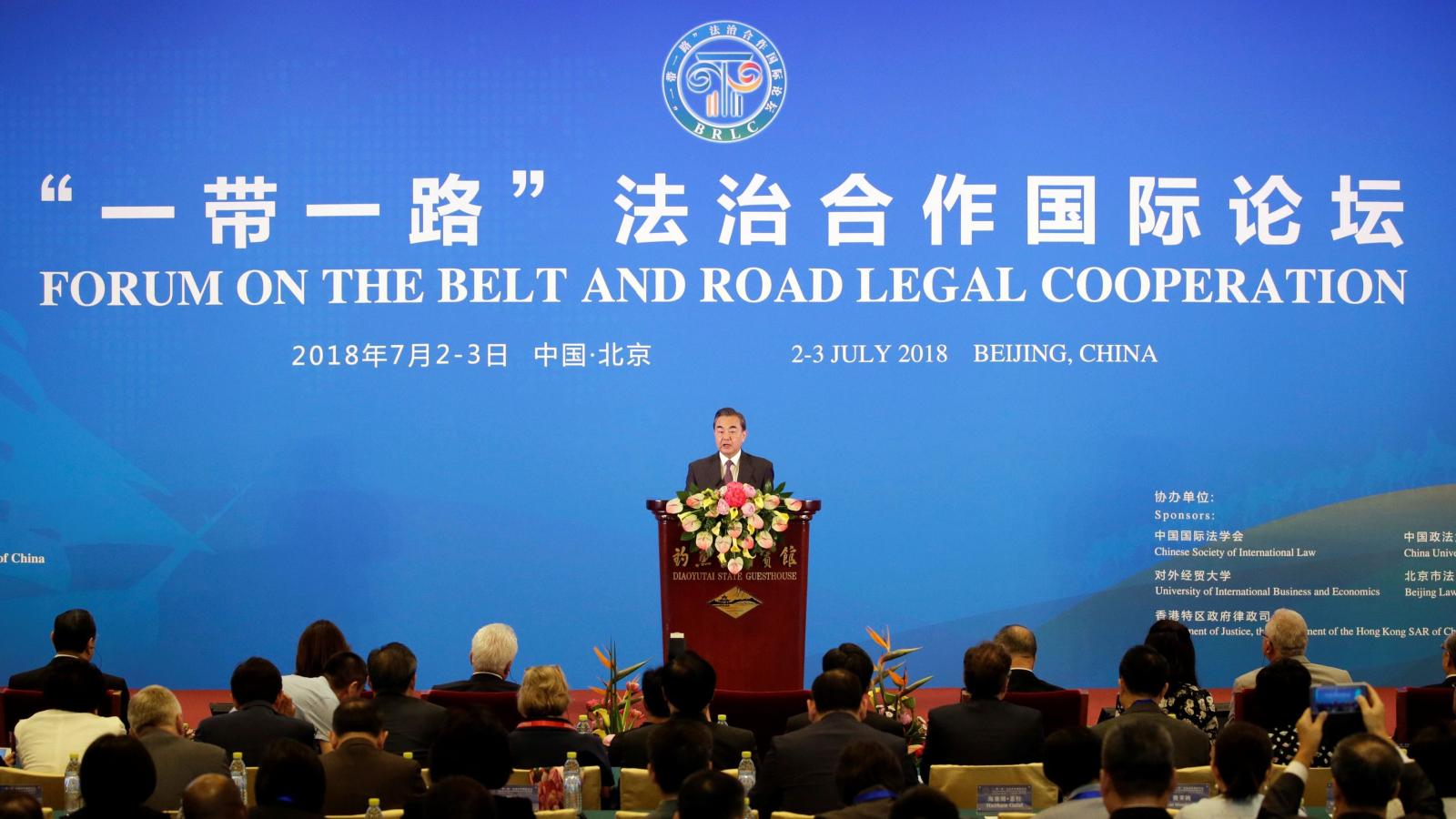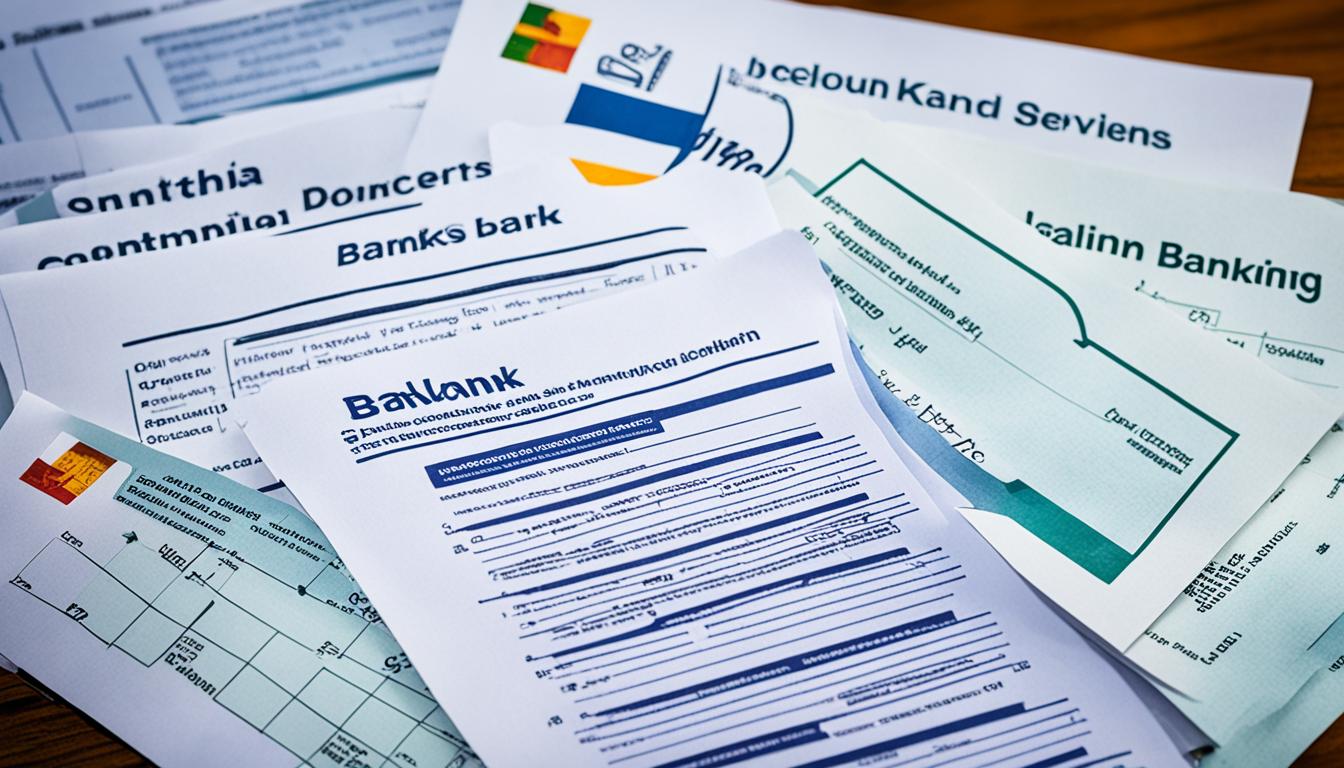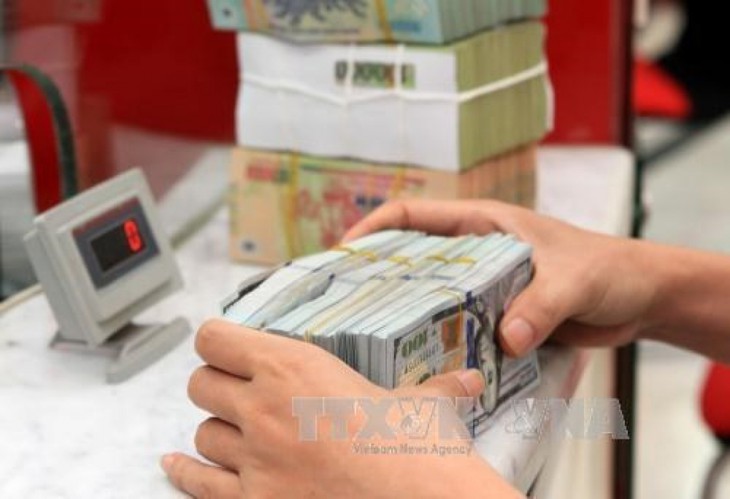(I) BACKGROUND TO THIS REPORT
- Over the past thirty two months, various inquiries, investigations and judicial processes in relation to Sri Lanka’s biggest-ever economic scandal, the Bond Scams of February 2015 and March 2016, have been carried out by different authorities. However, due to the complexity of this issue and the subsequent masterly cover-up attempt, the magnitude of the monetary, economic and social losses arising from the Bond Scams have yet not been scientifically or authoritatively assessed in sufficient detail and depth. In that context, this Assessment attempts to identify the components of the different type of losses suffered by the Government, the Employees Provident Fund (EPF), the public, and the economy as well as attempt to quantify such losses wherever data is available to the writer.
- At the outset, the writer wishes to express his deep gratitude to the Commission for extending an invitation to submit this Report in order to obtain his views “on the loss, if any which has resulted from the Treasury Bond auctions held during the period of the Mandate of the Commission of Inquiry”. The writer also wishes to stress that this Assessment is by no means an exhaustive study, given the very short time available for its compilation and submission. However, the writer believes that this Assessment should serve as a helpful directional pointer to the Commission as well as any other stakeholders to prompt more detailed studies that could be undertaken in the future to formulate a more complete picture about the losses and damage caused by the Bond Scams.
- As a former Governor of the Central Bank of Sri Lanka (having served in that capacity from 01.07.2006 to 08.01.2015), the writer takes responsibility for this Report. He also acknowledges the fact that he has been fortunate to access many articles contributed by various experts and scholars, newspaper reports, official and other data relevant to the subject which has been available in the public domain, in relation to this complex matter, in the compilation of this Report.
(II) THE CAUSE FOR THE LOSS
- Sri Lanka’s largest annual Tender is for the sale of Government Securities where the yearly sales or “issues” of Treasury Bills and Bonds would total around Rs. 2,000 billion. The second largest Tender would probably be for the procurement of Oil, which, currently would be for a value of around USD 2.5 billion or Rs. 375 billion only. Hence, it would be readily appreciated that the Treasury Bills and Bonds that are “sold” by the Central Bank on behalf of the Government would need to be carried out via an excellent and time-tested system, while the debt-issuing function must necessarily be carried out by persons of high competence and impeccable integrity, who are well-versed and knowledgeable on the subject. Such stringent pre-requisites suggest that the Debt-issuing process must be professionally carried out without political and/or other influences that could damage or corrupt this all-important system. Such system must also be efficient in design and effective in operation in order to serve the Government, country and the economy.
- Unfortunately however, when considering the circumstances surrounding the now-infamous Bond Scams, it would be observed that the time-tested method of issuing/selling Treasury Bills and Bonds which had been diligently followed by the Central Bank since 1997, namely the “auction cum direct placement”, was inexplicably and suddenly changed to an “auction only” It would also be observed that such change, in the view of experts, enabled the commission of the biggest scam in the history of the nation.
- The “auction cum direct placement” system that was in place from 1997 up to 27th February 2015 enabled the Central Bank to obtain the best possible interest rates and thereby borrow at the least cost to the Government, in keeping with the most important outcome expected from the Public Debt Department (PDD) of the Central Bank which is to issue Treasury Bills and Bonds at the least possible cost to the Government.
- The Treasury Bills and Bonds outstanding as at end December 2014 amounted to nearly Rs. 4,000 billion. Accordingly, one percentage point increase in the overall interest rates paid by the Government when issuing Treasury Bills and Bonds would increase the Government’s debt servicing cost by a staggering Rs.40 billion. It may also be noted, for comparison sake, that the sum of Rs 40 billion far exceeds the entire construction cost of the Mattala Airport. Even a single basis point (1 bp) increase in interest rates would cost the Government a massive Rs. 400 million. Hence, it would be readily appreciated that it would be vital for the Treasury Bills and Bonds issue system to be designed and implemented in such a manner so as to ensure that the Government is able to borrow at the least possible cost, and not to be at the mercy of a few primary dealers whose intention would be to make the maximum profit for themselves.
- As explained by former Deputy Governor W. A. Wijewardena in his articles “Direct Sale of Government Securities – Demon or Servant” (http://www.ft.lk/article/553934/Direct-sale-of-government-securities–Demon-or-servant) published in the Daily FT of 11th July 2016 (copy attached – Annex 1) and “Issue of Treasury Bonds: CB has finally vindicated direct placements” (http://www.ft.lk/article/635047/Issue-of-Treasury-bonds–CB-has-finally-vindicated-direct-placements) published in the Daily FT of 14th August 2017 (copy attached – Annex 2), the “auction cum direct placement” system of issuing Treasury bills and bonds was introduced in 1997 when the primary dealer system was first introduced to the country during the term of office of Governor A.S. Jayawardena.
- According to W. A. Wijewardena, at a meeting chaired by Governor Jayawardena, the strategy for the smooth functioning of the primary dealer system was mapped out in the presence of then-Deputy Governor S. Easparathasan, then-Executive Director G.M.P de Silva, and then-Superintendent of Public Debt W. A. Wijewardena himself. At that meeting, it had been noted that there was the possibility of some primary dealers acting in collusion and seeking to artificially increase interest rates. Hence, the Central Bank had been of the view that such occurrences had to be prevented because the fundamental duty of the Central Bank was to raise funds for the Government at the cheapest cost, while also avoiding sudden increases in interest rates. Therefore, it was decided that the Central Bank should use its discretionary power as the “borrower of funds” to decide on the optimal amount it could raise through auctions without causing an unwarranted increase in interest rates, and getting the market participants to invest in the remaining quantum of bonds at the weighted average interest rate generated at the particular auction. Further, in the event all bids at the particular auction had been rejected, the amounts of bonds unissued were to be issued at the weighted average rate of the previous bond auction.
- This system ensured that an undue advantage was not enjoyed by any primary dealer, since they were required to invest in the Government Securities at around the prevailing market yield curve. In his articles, W. A Wijewardena has also stated that when it was pointed out to Governor Jayawardena that such a system would be against the normal “market forces”, the Governor’s response had been that: “There is no competitive market here because the licensed primary dealers are a group of oligopolists who can drive the rates to their advantage. The Central Bank, while seeking market development in the long run, has a right to prevent a situation that would lead to unfair trade practices by a few primary dealers who might have access to inside information. Hence, market development means market taming too.”
- This time-tested, transparent and well-thought-out system continued from 1997 to February 2015, and enabled the Government to issue Treasury Bills and bonds through the Central Bank without any substantiated allegations of fraud and/or misconduct and/or major controversy for over 18 years! However, that time-tested Treasury Bills and Bonds issue system was brought to an abrupt end in February 2015, and such action paved the way for the biggest scam in the country, now popularly referred to as “THE BOND SCAM”.
- According to information available in the public domain, the basic structure of this scam was as follows: The Central Bank initially offered to issue Rs. 1 billion worth of 30-year Treasury Bonds on 27th February 2015, carrying a fixed interest rate of 12.5% to the market, but issued Bonds to a value of Rs. 10 billion, which was 10 times the original offer. It was subsequently revealed that one-half of the suddenly enhanced issue amounting to Rs. 5 billion had been issued to a “connected” primary dealer at a price of around Rs. 91 per Rs. 100 bond whereas the prevailing market price of a Bond of those attributes was as high as Rs. 120, at that time. Accordingly, some bonds issued in this manner had inflicted a loss of nearly Rs. 291 million per bond of a face value of Rs. 1,000 million. In that regard, the direct loss to the Government arising from that issue had been assessed at 889.3 million by the Auditor General, as per his Special Report dated 29th June 2016 to COPE. (Please refer page 18). In the same Special Report, the Auditor General has also referred to the Bond Issue of 29th March 2016, wherein he has computed the loss suffered at that Bond Issue at Rs. 784.9 million, thereby placing the total direct loss from the two bond issuances which were under special investigation at Rs. 1,674.2 million.
- At the same time the Auditor General has observed in his Report (at page 34) that: “since the change of the methodology effected in the year 2015, a trend has been created among the primary dealers to submit bids at rates higher than as compared with the rates prevailing in the Secondary Market”. The above situation as reported by the Auditor General and interest rate increases across-the-board for all maturities as a result of the artificial escalation of interest rates that took place immediately after the 27th February 2015 Bond issue, caused a major upward interest rate shock, and the losses caused though the occurrence of those two twin-events were particularly severe. These losses are described and assessed in another section of this Report. (Please see paragraphs 22 to 27)
- It is now clearly established that the decision to abruptly terminate the “direct placement” component of the “auction cum direct placement” system had been implemented by Governor Arjuna Mahendran without proper technical advise from, or broad consultation with, the Senior Management of the Central Bank or the staff at the Public Debt Department. The Monetary Board too seems to have blindly ratified and accepted the decision when it was confronted with the fait accompli, one week after the scandalous issue. It also appears that the Monetary Board had also looked aside while misleading information was widely disseminated to the general public by the management of the Central Bank with regard to the circumstances pertaining to “direct placements” of Treasury Bills and Bonds. Further, it is now clearly established that the “auction cum direct placement system”, which, in the words of W. A. Wijewardena was “demonised” by the Prime Minister, the Government, and the Governor just after the Governor had started to adopt the “auction only” mechanism, had paved the way for primary dealers with inside information to corner the market at the expense of others, as feared by Governor Jayawardena in 1997.
- In fact, it is now abundantly clear that since the Public Debt Department officials were prevented by Governor Mahendran and the Monetary Board from actively guiding and regulating the market through “direct placements”, what was anticipated by Governor Jayawardena in 1997 had, in fact continued, causing a colossal loss and expense to the State from 27th February 2015 until 27th July 2017 (the day the “auction only” system was discontinued and the old system under a new name was restored). Accordingly, as a result of the PDD of the Central Bank surrendering its main weapon to regulate the market (on the orders of the Central Bank top management), it had been reduced to a pathetic on-looker, unable to deal with the manipulations and machinations of certain predatory primary dealers, and consequently, the country and the economy had to pay an enormous price on many counts as indicated in this Report.
- In the final analysis, it appears that the “direct placement” system was arbitrarily terminated by Governor Mahendran, at the request of the Prime Minister. Such discontinuance also seems to have been based on the unsubstantiated claim that such direct placements, (which were identified somewhat misleadingly as “private placements” by the Prime Minister and Governor Mahendran) had benefited a few primary dealers at the expense of others. Yet, on an objective evaluation, it would be readily seen that what happened in the Treasury Bill and Bonds issue system prior to February 2015 was the exact opposite. Prior to February 2015, all primary dealers were treated in a fair, professional and transparent manner, while the suddenly introduced-“auction only” system, benefitted a particular “connected” primary dealer only, who apparently has access to inside information as well. Interestingly, even with such inside information, it would have been quite difficult for a single Primary Dealer to have abused the Bond market, if the earlier “auction cum direct placement” system was in force. Therefore, the ill-advised request by the Prime Minister to the Governor, and the Governor acting upon such request, could have very well have facilitated the “connected” primary dealer to corner the market, at the expense of the State and the State-owned Investment Funds. That unfortunate position was further confirmed by the occurrence of the second Bond Scam that shocked the market in March 2016, which scam, the Monetary Board could have easily avoided, had it been in possession of its customary powerful market regulatory weapon of “direct placements”, which it had voluntarily and irresponsibly abrogated.
- Fortunately, after much prodding by the public and others, the Monetary Board has finally restored the “auction cum direct placement” system on 27th July 2017, although describing the change in language to suggest that it is a “new scheme”. (Central Bank Press Release attached – Annex 3). However, such restoration was done only after the government, public and the economy had suffered massive avoidable losses from 27th February 2015 to 27th July 2017 (a period of 29 months) due to the obstinacy and/or lethargy and/or recklessness of the top Government leaders, as well as Governor Arjuna Mahendran (from February 2015 to June 2016), and Governor Indrajith Coomaraswamy (from July 2016 to July 2017). In this connection, it would be noted that immediately upon the restoration of the “auction cum direct placements” system, the Treasury Bills and Bonds interest rates have undergone a sharp decline, which confirms the importance of an efficient, effective and credible system in order to achieve a stable and accurate interest rate regime.
- On several occasions, former Governor Arjuna Mahendran had stated that no loss has arisen due to the Bond Scam. Several top level leaders of the Government had also made valiant attempts to down-play the losses. In fact, one Deputy Minister, Sujeewa Senasinghe authored a book titled “මහ බැංකුවේ බැදුම්කර නිකුතුව – ඇත්ත නැත්ත”, and took great pains to justify the “auction only” system and extoll its virtues, and follow-up with the claim that no losses can be attributed as a result of this system of Treasury Bond issue. At one time, it was also suggested by Governor Mahendran that the controversial Treasury Bond was carrying a 12.5% coupon rate in the initial offering, and therefore there was no additional cost to the government since the controversial bond was issued at that rate! These preposterous claims would have normally caused some amusement in knowledgeable financial circles, if not for the unprecedented damage that these statements caused to the credibility of the government.
- In that background, it may be useful for all persons to familiarize themselves with certain terms used in this subject, and in particular, the meaning of two key terms: “coupon rate” and “yield rate”. The “coupon rate”, also referred to as the “interest rate” is the percentage rate at which investors receive interest from the Central Bank at 6-monthly intervals on the “face value” of their bond investments. It is generally fixed, and is specified at the time of the initial issue of a particular bond series. The Central Bank usually issues bonds by opening a new or an existing series at varying intervals over a period of time, until the total volume of the bonds issued under a particular series reaches an optimum level. That practice is based on the principle that the number of bond series in the market must not be too excessive, as that serves to promote a vibrant secondary market. A rational number of series also facilitates two-way quotes among primary dealers which is a fundamental requirement for efficient trading in the secondary market. At the same time, it enables debt managers to avoid the undue fragmentation of the bonds issued. The “yield rate” of a bond is the rate of return on an investment based on the market rate prevailing at the time of the issuance of the bond, where such rate would almost always vary from the coupon rate.
- When the secondary market “yield rate” is less than the “coupon rate”, an investor will have to pay more than the “face value” of the bond in order to buy the bond. For example, if the yield rate on a 30 year Treasury Bond is 11.1% (including 10% tax), and the coupon rate is 12.5%, an investor, in general, will be prepared to pay a “book value” of approximately Rs. 112/- (described as “book value”) to buy the Treasury bond of a “face value” of Rs. 100/-. That would then provide him with the expected 11.1% for his investment over the 30 year period. In the same way, if the secondary market yield rate is more than the coupon rate, an investor will, in general, be ready to pay only a “book value” which is less than the “face value” of the bond in order to buy the bond. For example, if the yield rate on a 30 year Treasury Bond is 13.9% (including 10% tax) and the coupon rate is 12.5%, an investor, in general, will be inclined to pay a “book value” of approximately Rs. 90/- to buy the Treasury Bond of a “face value” of Rs. 100/-, since the Bond would give him the expected 13.9% with a 30 year maturity, at that price.
(III) THE LOSS SUFFERED BY THE GOVERNMENT DUE TO THE HIGHER INTEREST BURDEN ARISING FROM THE UNNECESSARY AND UNWARRANTED INCREASE IN INTEREST RATES
- In the above background, the controversial bond of 27th February 2015, which carried a 12.5% coupon rate with a 30 year maturity could now be considered. On that day, the “yield rate” that prevailed in the secondary market for a 30-year Treasury Bond was 9.35% (net of tax) or a yield of 10.4% (with tax). In such circumstances, an investor would have been reasonably expected to pay about Rs. 119/30 to purchase a Bond with a face value of Rs.100/-. However, in a totally unexpected move, which was also contrary to the prevailing monetary policy stance in a falling inflation environment (inflation was 0.6% in February 2015, compared to 3.2% in January 2015, and expected to fall further from March 2015 onwards), the Central Bank accepted Treasury Bond bids at yield rates of 12.5% net of taxes, which worked out to a 13.9% yield rate including the tax. By doing so, certain closely connected investors were generously accommodated for issues of these Bonds, well beyond the originally intended issue of Rs. 1 billion, at a book value of around Rs. 90, when the expected price at that time for a Bond of Rs. 100/- face value was as high as Rs. 119/30.
- This simple arithmetic shows that by accepting Bonds at a deliberately “bumped-up” yield rate of 12.5% (net of taxes) which was significantly higher than the yield prevailing in the secondary market of 9.3% (net of taxes), the Government cash flow had suffered a tremendous loss of Rs. 29/16 for each Rs. 100/- bond. (i.e. Rs. 119/30, less Rs. 90/17) on some of the Bonds issued. That loss which was suffered by the government works out to a phenomenal sum of Rs. 291.6 million for every Rs. 1 billion, and that colossal loss was recorded in relation to a substantial number of the bonds that were issued on that day. The Auditor General has placed that loss at Rs. 889.3 million in his Special Report to COPE dated 29th June 2016.
- Unfortunately, the loss to the Government was not only confined to the above direct “immediate” loss, since the impact of the artificially enhanced interest rate on the controversial 30 year Treasury Bond had a cascading effect on all subsequent Bond issuances as well as the entire terms of such Bonds. As is well documented, the interest rates in the Government securities market had been on a declining trend from about mid-2014 onwards, and just one week before the controversial Bond issue, the Secondary Market trading showed that the 3 month Treasury Bill was trading at around 5.86%, the one year Treasury Bill was trading at around 6.1%, and the 30 year Treasury Bond was trading at around 9.48%, while the latter rate had apparently dropped to about 9.35% before the February 27 auction date.
- In that scenario, by accepting 30 year Treasury Bonds at 12.5% (up from the secondary market rate of around 9.35%) in highly controversial circumstances, the entire yield rate structure in the Government securities market underwent a significant shift upwards from 27thFebruary 2015 onwards. That occurrence, in turn, led to an unnecessary, unwarranted and unacceptable additional cost in the future interest payments in the Government budget.
- This situation could be seen clearly in the table depicting the Treasury Bill and Bond rates prevailing before and after 27th February 2015 (Table 1), as well as in the Graph depicting the two yield curves, before and after 27th February 2015. (Graph 1)


26. A comprehensive computation based on the “pre” and “post” 27th February 2015 interest rates has been prepared up to 31st December 2015, on which date the Monetary Board made an upward revision to its Policy Rates. On that basis, the computation reflects the loss suffered by the Government due to the additional interest payments that it would have to bear over the entire periods of the respective Treasury Bills and Bonds issued after 27th February 2015. This computation has also been done on the reasonable assumption that the interest rates had been artificially and unnecessarily pushed up on that date, when the rational and logical trend was for the interest rates to gradually decrease over the succeeding half year or even year. Such contention is supported scientifically by the Chart depicting the movement of the Colombo Consumer Price Index (CCPI) which shows that inflation was on a clear downward path (Annex 4). The reduction in inflation, in turn, should have rationally, logically and necessarily, led to a reduction of the overall interest rates, and not an increase in the interest rates. Accordingly, a detailed computation has been prepared showing the additional interest that the Government had to suffer, based on the difference between the interest rates that the Government had to accept consequent to the 27th February 2015 Bond issue, and the interest rates that prevailed immediately before the corrupt and unwarranted increase of interest rates due to the controversial Treasury Bond issue.
27. This loss computation which is based on officially reported Treasury Bills and Bonds data and the above-stated hypothesis, reveals the extra interest cost incurred by the Government over the next several decades, as a result of the increase in the entire spectrum of interest rates. As per such computation, the additional interest cost amounts to 144,598 million. (Please see Annex 5).
(IV) THE LOSS SUFFERED BY THE PUBLIC DUE TO THE UNNECESSARY AND UNWARRANTED INCREASE IN INTEREST RATES
28. In every economy, the Government Securities’ interest rates establish the risk-free yield rate benchmark for all other market instruments. It also provides guidance for the pricing of the entire range of financial instruments from over-night bank deposit rates to ten-year prime corporate rates to even 20-year housing loan facility rates to ordinary citizens. As a result of the Bond Scam, it is now evident that every borrower has had to suffer a premium on the interest payable, since the interest rate equilibrium that prevailed just before February 2015 was greatly disturbed, leading to higher costs and greater risk, both individually and as a society.
29. The cumulative impact and effect of such extra interest payable by the public is undoubtedly colossal, and would be in the range of tens of billions of Rupees, although a careful study would need to be done to arrive at an accurate estimate of such losses. The writer regrets that such a computation could not be carried out by him to be included in this Report, due to the paucity of time available to compile this Report. However, in order to assist the Commission to the maximum degree possible, the writer would be pleased to undertake such an exercise, if further time of around 3 weeks could be granted to fulfil such a task.
30. As a start for such a study, a data series which tracks the behaviour of the Average Weighted Prime Lending Rate (AWPLR) and the Average Weighted Lending Rate (AWLR) would provide a useful background regarding the movement of the Lending rates that would have affected the people as well as the entire economy. In the writer’s view, such a study could confirm the proposition that both the AWPLR and AWLR has risen since February However, at the same time, it must also be noted that such study is also likely to show that the AWPLR would have risen quickly from 27th February 2015 onwards, since the transmission time of policy and/or other regulatory measures is much faster in the case of the AWPLR, while the study would also probably show that the AWLR has increased more showly, since the AWLR has a considerably longer transmission period for policy and/or other regulatory measures to permeate. Nevertheless, in the writer’s view the movement of both AWPLR and AWLR would confirm upward movements since 27th February 2015, and that assumption may be justified as per the following brief table.

(V) THE LOSS SUFFERED BY THE ECONOMY DUE TO THE EROSION OF CONFIDENCE AS A RESULT OF THE BOND SCAM
31. It is an indisputable fact that, if the risk-free bench mark yield curve is artificially corrupted through some manipulation, or does not reflect the underlying macro- fundamentals including low inflation, it creates a huge asymmetry in the functioning of financial markets. In such circumstances, the private sector, (both foreign and local) which is expected to make an annual collective investment of around 28% of GDP to generate an annual real GDP growth of around 7.5%, would not be able to do so, and such a situation would eventually have a highly negative impact on employment and other macro-economic variables as well. The resultant instability will lead to loss of confidence amongst investors, who then either postpone their investment decisions, or demand higher premia for their investments.
32. In the writer’s article contributed to the Daily FT on 22nd June 2015, titled “An assessment of the loss arising from the Bond Scam” (http://www.ft.lk/article/435701/An-assessment-of-the-loss-arising-from-the-bond-scam) (Copy attached – Annex 6), it was stated as follows: “Ominous signs of such outcomes (mainly investors post-poning investment decisions) are now visible in the Sri Lankan economy, with the Sri Lankan Rupee being under pressure, exporters showing reluctance to repatriate their sales proceeds, foreign reserves falling, and a discernable trend of foreign investors leaving the Government Securities Market and the Colombo Stock Exchange. These qualitative and quantitative losses in the economy are significant and far reaching, and a considerable part of that instability could be attributed to the Bondscam and massive quantum of negative publicity that had arisen as a result of the scam”.
33. After a period of over 2 years since the publishing of that article, it may now be timely to clinically and dispassionately assess the validity or otherwise of the writer’s “predictions”, as above since the results pertaining to the Sri Lankan economy for 2014, 2015 and 2016 are now available, as per the relevant Central Bank Reports. Based on the figures contained in those Central Bank Reports, the results pertaining to the relevant macro-economic fundamentals could be analysed in order to determine the movement/trend and the possible causes therefor.
34. Economic Growth has dipped significantly since 2014…

35. GDP per capita has stagnated

36. Inflation has dipped in 2015, but is beginning to rise again in 2016

37. Number Employed has dropped dramatically

38. Balance of Payments (BOP) has turned into a massive deficit

39. Trade Deficit has expanded significantly

40. Foreign Direct Investments (FDIs) have dropped drastically

41. External Reserves have plunged significantly

42. Foreign Investment in Treasury Bills and Bonds have reduced significantly

43. Sri Lanka Rupee has depreciated substantially

This impact of the LKR depreciation has resulted in the total public debt rising by Rs 285 billion in 2015 (2.6% of GDP), and Rs. 187 billion in 2016 (1.6% of GDP).
44. International Credit Ratings have worsened

45. Fiscal Deficit has widened

46. Public Debt has surged to dangerous levels

47. Government interest cost has escalated

48. Sri Lanka’s Global Rankings have fallen dramatically over the past 2 years

Notes:
- South Asian countries: Afghanistan, Bangladesh, Bhutan, India, Maldives, Nepal, Pakistan and Sri Lanka.
- Improvement in ranking in 2016/17 over that of 2014/15 is given in a green background, while a deterioration is given in a red background.
- In the “Ease of Doing Business” index, Sri Lanka has now fallen behind Bhutan and Nepal.
- In the “Rule of Law” index Sri Lanka has now fallen behind Nepal and India.
- In the “Corruption Perception” index Sri Lanka has now fallen behind Bhutan and India.
- * 2017/18 Global Competitive Report of the World Economic Forum
49. The above-stated qualitative and quantitative declines, failures, losses and collapses in almost all macro-fundamentals of the economy and global rankings and ratings are significant and far reaching, and a considerable part of that instability could be attributed to the impact of the Bond Scam, and the massive quantum of negative publicity that had arisen as a result of the Bond Scam. If needed, the correlation and relationship between the different macro-fundamentals and the Bond Scam and its effects could be submitted by the writer, although in the very short time available, such an exercise could not be carried out in this instance
(VI) THE LOSSES SUFFERED BY THE EPF
50. Publicly available information indicate that the Employees Provident Fund (EPF) seems to have deliberately avoided the Primary Bond Auctions at certain important and vital auctions, and resorted to the practice of purchasing Treasury Bonds at the Secondary Market shortly thereafter. By doing so, the EPF is said to have made investments which had caused massive losses to the Fund, at the expense of certain other selected financial institutions and intermediaries.
51. Further, according to informal sources, the EPF’s losses are said to have been computed by the Central Bank through an internal investigation, and hence it is likely that the Commission would be privy to such investigation reports. While speculation in the markets suggest that the loss to the EPF as a result of those dubious deals may be around Rs 10,000 million, the Commission may be able to directly obtain the exact information and computations re. those losses.
(VII) CONCLUSION
52. The writer is honoured to submit this Report in response to the Presidential Commission of Inquiry to Investigate and Inquire into the Issuance of Treasury Bonds. The writer would also be pleased to furnish any clarification or appear before the Commission, if the Commission so determines. It is the fervent wish and hope of the writer that the above narrative and analysis would assist the Commission to formulate its own judgement re. the Losses arising from the Bond Scam and also to assess the effects of this meticulously-planned, multi-faceted and far-reaching scam, which has badly damaged the credibility of the Sri Lankan economy and inflicted the country’s largest-ever loss.
